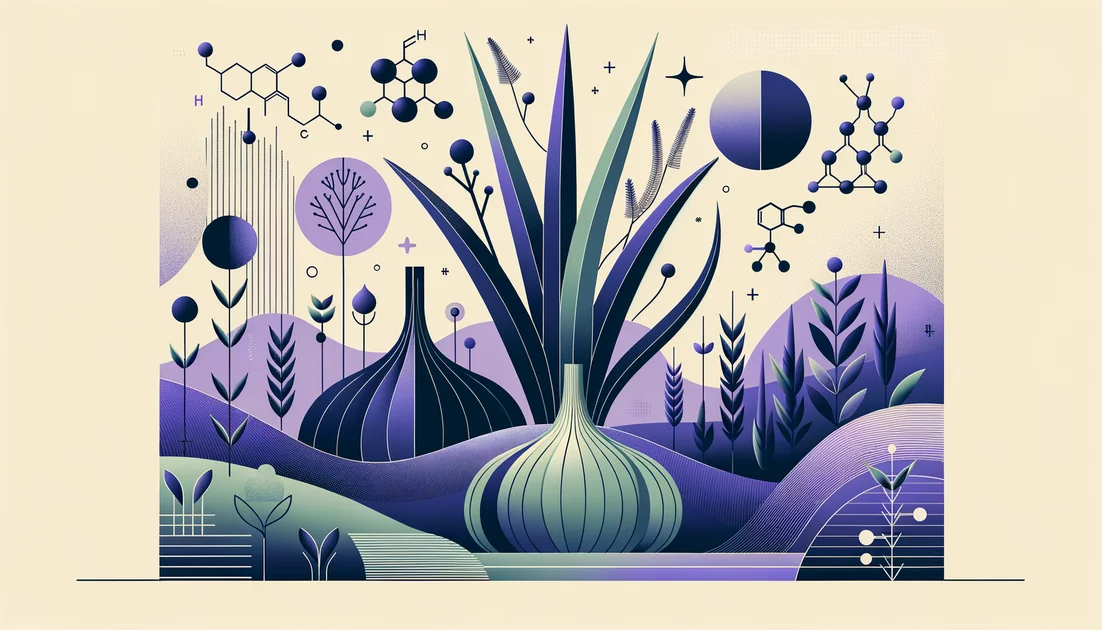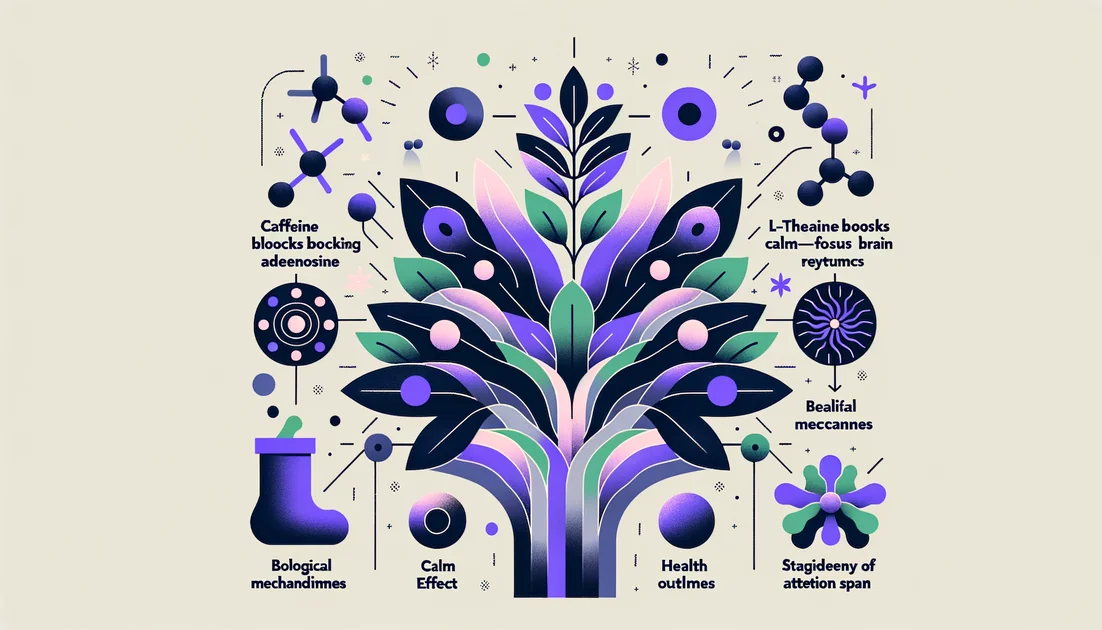
The Stinking Rose, Reimagined: From Pyramid Rations to a Blood-Pressure Whisperer
The story begins in two rooms. In one, sunlight slants across limestone as Egyptian workers chew pungent cloves before hauling stones—garlic as fuel for the human engine. In the other, a quiet clinic room hums as a cuff tightens around a patient's arm; a capsule of aged garlic goes down with water, and numbers on a screen start to tell a subtler story.
- Evidence
- Promising
- Immediate Effect
- No (clinical benefits accrue over weeks) → 6-12 weeks
- Wears Off
- Gradually over weeks after stopping
What ancient cooks intuited—and labs now test
Ancient medical writings from Egypt, Greece, India, and China praised garlic for strength and stamina; Hippocrates himself kept it in his therapeutic kit. Today, the U.S. National Center for Complementary and Integrative Health strikes a measured note: garlic may modestly lower LDL cholesterol and blood pressure, but effects are small and take time. Safety is generally good, with a specific caution about bleeding risk. [1]
"Medical texts from China, India, Egypt, Greece and Italy mention medical applications of garlic.. Hippocrates.. used garlic as an essential component of one of his therapies." —Richard Rivlin, Weill Cornell Medicine. [13]
A quiet lowering of pressure
In modern randomized trials, a particular form—aged garlic extract—keeps showing up. In patients whose blood pressure stayed high despite medication, 12 weeks of aged garlic extract led to an average 10 mmHg drop in systolic pressure versus placebo. [2] A follow-up dose-response study found ~12 mmHg systolic reduction with two capsules daily, again over 12 weeks. [3] In another controlled trial, aged garlic shaved 5 mmHg off average systolic pressure, with some "responders" seeing double-digit improvements and better measures of artery "springiness." [5] A broader view confirms the pattern. A 2020 review tied garlic supplementation to average reductions of about 8 mmHg systolic and 6 mmHg diastolic in hypertensive people, comparable to a first-line drug for some. It also noted improvements in central blood pressure and arterial stiffness—how well the arteries cushion each heartbeat—and even shifts in the gut microbes that live alongside us. [5]
"Aged garlic extract is effective in reducing blood pressure.. and has the potential to improve arterial stiffness, inflammation, and gut microbial profile." —A/Prof Karin Ried, lead investigator of the GarGIC trial. [4][12]
The newest syntheses keep the message tempered: across 108 randomized trials, garlic meaningfully nudged key cardiometabolic markers—blood pressure, LDL, triglycerides, inflammatory and oxidative stress markers—most clearly in people starting with higher risk. Effects were modest, not miraculous. [6] Specifically for aged garlic, a 2024 meta-analysis found small but significant reductions in systolic pressure and LDL. [7]
Why would a kitchen bulb relax arteries?
When you slice a clove, two separate compartments meet: an enzyme and a precursor. They lock together and quickly form allicin, the fleeting spark that gives garlic its bite. From there, a family of sulfur compounds fans out. In plain terms, they help the lining of blood vessels make more of its natural "relax" signal, reduce the stickiness of platelets, and soothe low-level inflammatory chatter—each a tiny of the dial toward easier flow. Crush, wait, then cook briefly, and you preserve more of those sparks; heating first snuffs the enzyme. Letting chopped garlic sit about 10 minutes before the pan is a surprisingly powerful trick. [9]
The gut-heart corridor
In a 12-week randomized trial, people with uncontrolled hypertension taking aged garlic didn't just lower their blood pressure; stool tests showed richer microbial diversity, with more Lactobacillus and Clostridia—microbes linked to calmer inflammation. Their central blood pressure and arterial stiffness improved too. [4] That gut shift has become a fresh plotline in garlic research: an old ingredient nudging a new frontier. [5]
Cholesterol: a nudge, not a knockout
Garlic's effects on lipids have swung between hopeful and inconsistent. The latest large meta-analysis suggests small but statistically significant drops in total cholesterol and LDL, slight HDL bumps, and lower triglycerides—again, clearest in people whose numbers were high to begin with. [6] A recent meta-analysis focused on dyslipidemia found LDL reductions around 0.44 mmol/L, with older adults seeing more benefit. [14] Some trials of black or aged garlic show diastolic pressure improvements without big cholesterol shifts over six weeks—another reminder that form, dose, and time matter. [15]
The cold truth
Garlic is marketed as an immune booster, yet when Cochrane reviewers hunted for prevention evidence, only one acceptable trial surfaced: fewer self-reported colds in the garlic group over 12 weeks—but too little data to draw firm conclusions. Honesty is part of the story here. [8]
A real-world cautionary tale
Because garlic can make platelets less sticky, it sometimes tips the balance toward bleeding. A 65-year-old man taking garlic extracts had unexpected postoperative bleeding after a routine prostate procedure; the authors implicated the supplement. [10] In healthy volunteers, higher-dose garlic reduced platelet aggregation and lengthened bleeding time; it's not aspirin, but the direction is the same. [11] For surgeries and blood thinners, disclosure matters. [1]
Bringing the lab to the kitchen—and your routine
If your goal is blood pressure, studies most often used aged garlic extract providing about 1–2 mg/day of S-allyl-cysteine for 8–12 weeks, sometimes alongside standard meds. [2][3][5] Expect weeks, not days, before numbers drift. For cooking, think of alliinase as garlic's tiny factory: chop or crush, pause ten minutes, then kiss it with heat. [9] If lipids are the target, the best evidence still calls the effect modest and gradual. [1][6] Garlic is not a cape and it isn't a cure. But in a life built of small, steady choices, it can be a collaborator: a plant that traveled from pyramid rations to placebo-controlled trials, offering a little more ease to our arteries—and a lot more flavor to our days. [1][2][4][6]
Key takeaways
- •Evidence centers on aged garlic extract, which in trials lowered systolic blood pressure by roughly 5–10 mmHg over 12 weeks in uncontrolled hypertension.
- •Effects are modest and gradual; think adjunct to diet, exercise, and medications—not a replacement.
- •Practical dosing used in studies: about 960–1,200 mg aged garlic extract daily, providing roughly 1–2 mg of S-allyl-cysteine.
- •Take supplements consistently with meals; in cooking, crush/mince and rest ~10 minutes before brief heat to let allicin form.
- •Garlic may mildly improve LDL, triglycerides, and arterial stiffness, with signals toward better gut microbial richness in hypertensives.
- •Safety is generally good, but high doses can lengthen bleeding time—tell clinicians before procedures or if using anticoagulant/antiplatelet drugs.
You might also like
Explore more of our evidence-led investigations, comparisons, and guides across every article style.

Nature's Way
Nature's Way: Testing powerhouse with selective transparency

Whey protein (concentrate/isolate/hydrolysate) vs Plant protein (pea/soy/rice blends)
Pick whey if you want the most leucine and lean-mass support per scoop and you tolerate dairy; pick plant protein if you're vegan/dairy-sensitive—just use a blend or slightly larger dose to match leucine.

Best for longevity
Selenium 200 mcg + CoQ10 200 mg daily (4 yrs) — mortality signal [2]

L-Isoleucine
You swirl a post-workout shake, thinking about muscle recovery, when a quieter story unfolds inside your body: a single amino acid that can nudge blood sugar down within an hour—and yet, when it lingers too high in the bloodstream for too long, it's tied to diabetes risk. Welcome to the paradox of L-isoleucine.

Calm Focus Unlocked: Kill The Jitters
Real but modest, short-term benefits with a "gas pedal + steering" effect; best for focused tasks, not all-day stimulation.

Tocotrienols
The stealthier cousins of vitamin E—built with springy tails that move differently in cell membranes and behave differently in your body.


